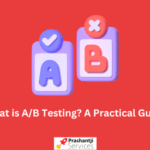The Roadmap to Success: Four Steps for a Powerful Performance-Based Marketing Campaign
Are you tired of running marketing campaigns that yield little to no results? Do you want to boost your business’s growth and take it to the next level? If so, then buckle up because we have a roadmap for success. In this blog post, we’ll be sharing four powerful steps for creating a performance-based marketing campaign that will skyrocket your sales and make your brand stand out in the crowded marketplace. Whether you’re a seasoned marketer or just starting out, these proven strategies will help you achieve your goals and exceed expectations. So get ready to transform your business with our roadmap!

Introduction
performance-based marketing is a type of marketing that focuses on results. This means that rather than focusing on measures like brand awareness or website traffic, performance-based marketers are focused on generating leads, sales, or other conversions.
In order to run a successful performance-based marketing campaign, there are four key steps that you need to take:
1. Set your goals and KPIs
2. Identify your target audience
3. Develop your offer
4. Create your landing page
If you take the time to carefully complete each of these steps, you’ll be well on your way to running a successful performance-based marketing campaign!
Performance-based marketing is a great way to reach new customers and drive conversions in a cost-effective way. To ensure that your campaign is successful, it’s important to have an understanding of the customer journey and how your products fit into that journey. You’ll need to understand who your target audience is, as well as the goals and KPIs you are trying to achieve with your campaign. Then, you can create an offer that will appeal to them, develop a landing page that captures their attention, and optimize it for maximum conversions.
By following these steps closely, you can build a powerful performance-based marketing campaign that will help you reach new customers and increase sales. With the right strategy and execution, performance-based marketing can be an effective tool in driving growth for your business.
Step 1: Set Clear Goals and Objectives for Your Performance-Based Campaign
Setting clear goals and objectives is the first step to any successful performance-based marketing campaign. Without a clear idea of what you want to achieve, it will be difficult to measure your success and determine whether your campaign is on track.
There are a few things to keep in mind when setting your goals and objectives:
1. Be realistic in what you can achieve. It’s important to set goals that are achievable, otherwise, you’ll only be setting yourself up for disappointment.
2. Make sure your goals are specific. Vague goals like “increase sales” or “drive traffic” are not going to be helpful in measuring your success. Instead, try to focus on specific numbers like “increase sales by 10%” or “double web traffic from last month.”
3. Set a deadline for your goals. This will help you stay on track and ensure that you’re making progress towards your objectives.
4. Write down your goals and objectives so you can refer back to them later. This will help keep you accountable and ensure that you don’t forget what you’re trying to achieve.
With these tips in mind, take some time to sit down and set clear goals and objectives for your performance-based marketing campaign. Doing so will put you on the path to success and help ensure that your efforts are focused and effective.

Step 2: Research Your Target Audience and Develop a Strategy
Before you can develop a performance-based marketing campaign, you need to understand who your target audience is and what they want. This step is all about research. You’ll need to figure out where your target audience hangs out online and what kinds of content they are interested in. Once you have a good understanding of your target audience, you can develop a strategy for reaching them.
There are a few different ways to go about this research. You can start by looking at your website analytics to see who is already visiting your site and what pages they are looking at. You can also use social media listening tools to track what people are saying about your brand online. You can conduct surveys or interviews with potential customers to get a better sense of their needs and wants.
Once you’ve done your research, it’s time to develop a strategy for reaching your target audience. This will involve creating content that appeals to them and promoting it through the channels where they hang out online. It’s also important to consider how you can convert leads into customers once they land on your website. Creating a strong call-to-action (CTA) is essential for driving results with performance-based marketing.
Step 3: Create Engaging Content and Promotions
When it comes to creating content that will engage your audience and promote your performance-based marketing campaign, there are a few key things to keep in mind.
First, your content should be relevant to your target audience and offer something of value. It should be interesting and engaging, so that people will want to read it and share it with others.
Secondly, your content should be well-written and free of any errors. This will help to build trust with your audience and make them more likely to take action on your promotions.
You should promote your content through social media and other online channels. This will help to reach a wider audience and increase the chances of people seeing and engaging with your campaign.
Finally, you should also consider offering incentives for people to take action on your promotions. This could be discounts, free products or services, or other rewards that people would find desirable. These incentives can help to motivate people to take action and increase the success of your campaign.

Step 4: Analyze the Results and Adjust Your Approach as Needed
After you’ve collected all of the data from your performance-based marketing campaign, it’s time to analyze the results and see how you can improve. Look at the numbers and compare them to your goals. If you didn’t reach your goals, don’t be discouraged! Just take a look at what went well and what didn’t go so well, and adjust your approach accordingly.
One important thing to keep in mind is that performance-based marketing is an ongoing process. You’ll need to constantly monitor your campaigns and make adjustments as necessary. But if you follow these four steps, you’ll be well on your way to success!
Good luck with your performance-based marketing campaigns!
After you’ve completed your performance-based marketing campaign, it’s important to analyze the results in order to see what worked and what didn’t. This will help you adjust your approach for future campaigns.
To start, take a look at your overall conversion rate. This is the number of people who completed your desired action divided by the total number of people who saw your ad. If your conversion rate is low, that means you need to improve your ad targeting or creatives.
Next, look at the cost per conversion. This is the amount of money you spent on your campaign divided by the number of conversions. If this number is too high, you need to either increase your budget or lower your cost per click.
Examine your click-through rate. This is the number of people who clicked on your ad divided by the total number of people who saw it. If this number is low, you may need to change your ad copy or creatives.
By analyzing these key metrics, you can adjust your approach as needed to improve your performance-based marketing campaigns.
Conclusion
Crafting a successful performance-based marketing campaign requires a great deal of planning, strategy, and execution. By following the four steps in this roadmap for success – setting measurable goals, establishing KPIs, developing an effective creative approach, and leveraging data analysis – marketers can be sure that their campaigns are on track to deliver impressive results. With a well-thought-out plan in place and regular tracking of progress against objectives, marketers can confidently launch powerful performance-based marketing campaigns that will help them reach their desired outcomes.








